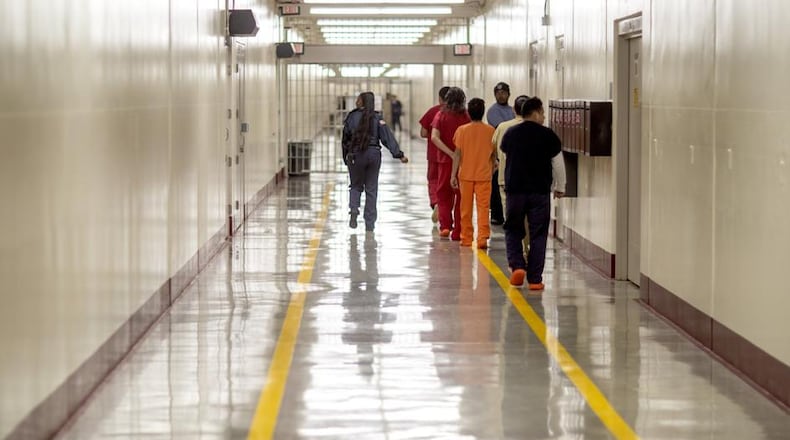Immigrant detention centers in Georgia will start opening their doors to visitors for the first time in over two years.
Last week, U.S. Immigration and Customs Enforcement (ICE) signaled that detention facilities country wide would phase in the return of social visits, which had been suspended at the onset of the pandemic. It’s a policy change with significant implications for Georgia, home to the sprawling Stewart Detention Center. Stewart’s average daily population of 1,095 detainees makes it the busiest immigrant detention facility in the nation, according to federal data, slightly ahead of a detention complex in South Texas.
ICE’s decision to ease its visitation restrictions is welcome news for Amilcar Valencia.
Valencia leads El Refugio, a nonprofit founded in 2010 to support the family members of Stewart detainees. Given the detention center’s remote location in rural southwest Georgia, logistical hurdles could make visits complicated. El Refugio filled that gap by providing families free meals and lodging in a hospitality house just down the road from the detention complex in the town of Lumpkin. Its staff is looking forward to returning to that work.
ICE’s move to once again allow visitation “is a good first step in the process to ensuring that people detained have real connections with their loved ones and people in the community,” Valencia said. “Visitation breaks down their isolation.”
ICE noted that the return of social visits will happen gradually as part of a “fluid” process that takes into consideration local conditions and updates to CDC guidance.
“Teams will continue to closely monitor conditions and alter phases based on new information as needed. This is how we will continue to deliver high-quality, evidence-based care to detained individuals in a dignified, respectful manner,” the executive associate director for enforcement and removal operations at ICE, Corey A. Price, said in a statement.
For immigrant advocates, the return of social visits in immigration jails is a long time coming, with other types of penal institutions taking that step much earlier. Federal prisons, for instance, started allowing inmates’ loved ones to visit again in October 2020.
“We are eager to return to our roots of providing hospitality and visitation in Lumpkin,” said PJ Edwards, board chair of El Refugio. “We have watched the world reopen with Covid-safe protocols while people in detention remain cruelly isolated and unable to receive visitors. Having witnessed the value of in-person visits for many years, we welcome the belated restoration of visitation.”
Aside from buttressing detainees’ mental health, visitation can also help bring potential human rights violations to light.
“Visitation is not only a crucial means of emotional support for people experiencing detention, it also provides a lifeline to advocates and a public window into these otherwise sealed-off prisons,” said Monica Whatley, project coordinator with the Southern Poverty Law Center’s Southeast Immigrant Freedom Initiative. “The reinstatement of visitation is vital to protecting human rights and shining a light on the abuses at these detention centers.”
Lautaro Grinspan is a Report for America corps member covering metro Atlanta’s immigrant communities.
About the Author
Keep Reading
The Latest
Featured


